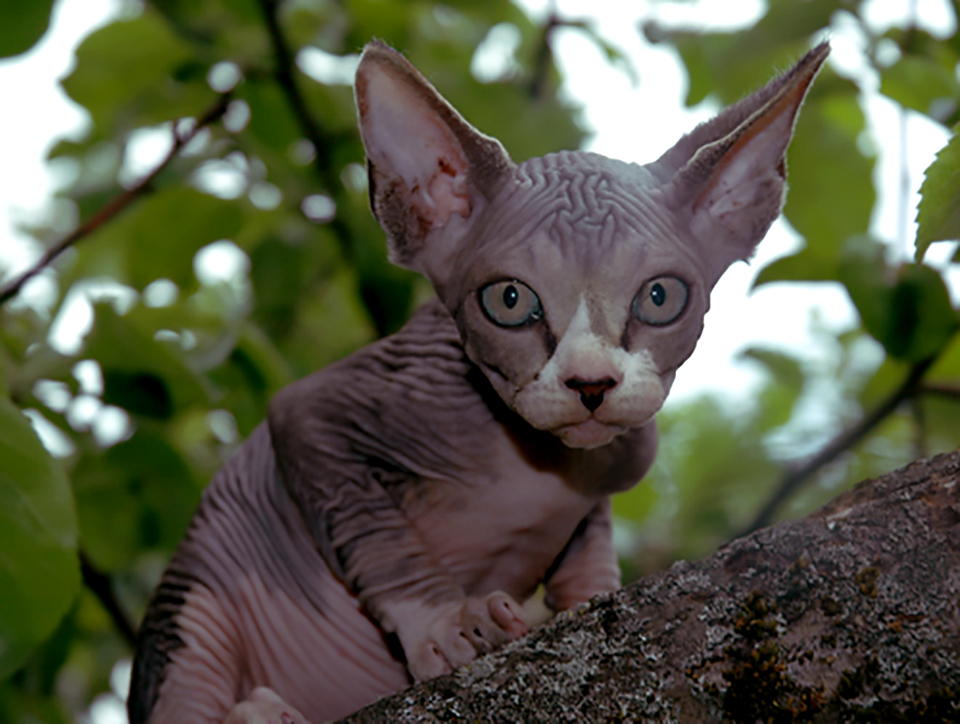About sphynx

Sphynx history
In 1966 a domestic cat gave birth to a hairless kitten in Toronto, Canada. It was discovered to be a natural mutation and the Sphynx cat as we now know it today came into existence. Not only this cat but other hairless cats have been found worldwide. Cat breeders have bred the Sphynx to normal coated cats and then back to hairless for many years, the purpose of this breeding was to create a genetically sound cat with a larger gene pool and hybrid vigor.
Health
The Sphynx is a very robust breed with few health or genetic problems. They do need to be tested on a yearly basis for HCM by a cardiologist. Hypertrophic Cardiomyopathy is a heart disease where the heart muscles enlarge and thicken, it is the most common heart disease found in cats. An estimated 3% of Sphynx have HCM which is also found in many other breeds including moggies (domestic).
Personality
At first glance I thought the Sphynx looked quite peculiar. When I had the chance to interact with the Sphynx, I changed my mind. They have a very intelligent character, are quite cheeky and curious. The Sphynx may look quite fragile, but by no means are they fragile. I also cannot believe how laid back Sphynx are. I can take my Sphynx anywhere - nothing worries them. They are as natural as any other cat breed but without the hair (which has many advantages). I like my cats to be inside but it can be quite embarrassing to have visitors come, (who are not cat people), they sit on your lounge and when they get up they have a backside full of hair. This is never a problem with the Sphynx. Also some people with allergies to cat hair can tolerate a Sphynx. The Sphynx cat is considered a rare cat breed and quite high on a popularity scale. For this reason you may find yourself on a waiting list - believe me, it will definitely be worth the wait.
Sphynx care
The Sphynx coat is almost peach like, some hair is often present on the nose, tail, toes and ears. They are registerable in every colour (like coated cats) the colour is seen in the pigment of the skin also in the few hairs that they do have. Sphynx DO GET COLD! If it is cold for us and we are clothed then it is definitely too cold for the Sphynx. Sphynx are not totally hairless, there is a fine down that covers the body. Because of their hairlessness the body of the Sphynx absorbs more oils and for this reason the Sphynx need to be bathed on a regular basis. It all depends on the individual Sphynx, some may need weekly bathing, others fortnightly. I don't like to let mine go any longer than a fortnight. Make sure the bath water is nice and warm - not too hot. Use a good quality shampoo that is gentle on the skin. Always take care not to get water in the ears or soap in their eyes. A quick towel dry and then I do the ears, I use Aristopet ear cleaner, it loosens the wax and any debris in the ear and also dries out the ear canal. I then use baby wipes to clean out the ears and VERY GENTLY use a cotton bud to clean the ear canal - be very careful not to put the cotton bud too far down the ear canal, done the wrong way this could damage the ear drum. Then we go onto the nails, a quick trim of the nails and all is done. It probably takes about 15 minutes for the whole procedure.